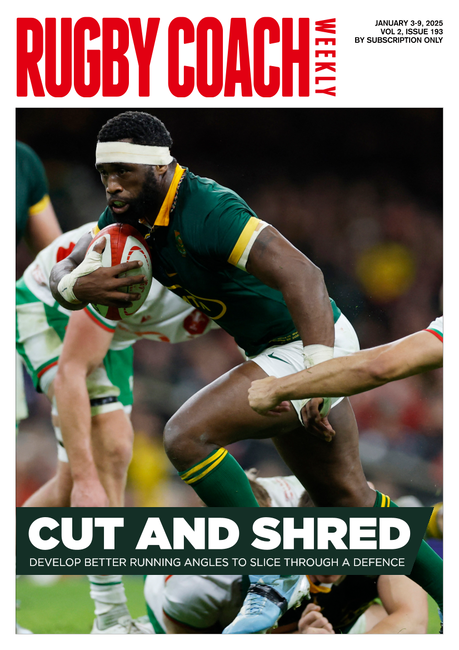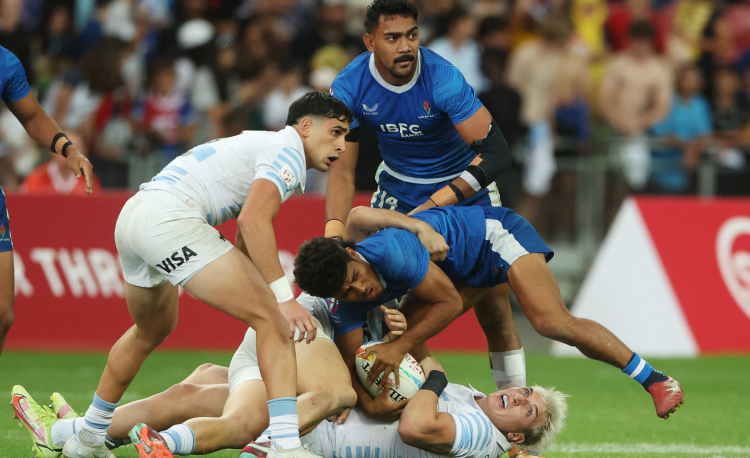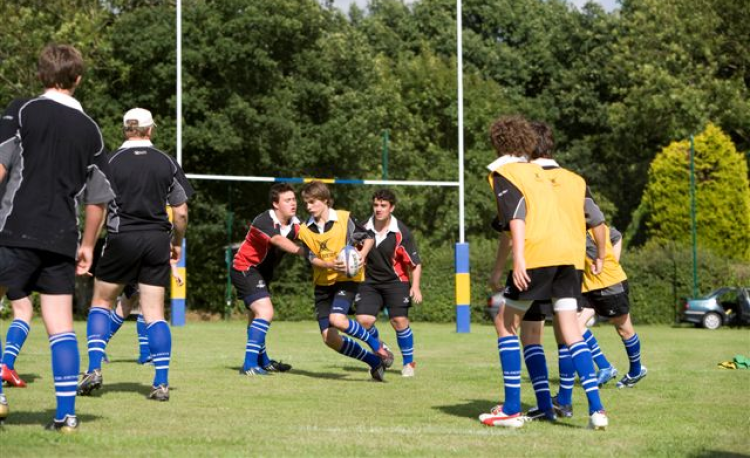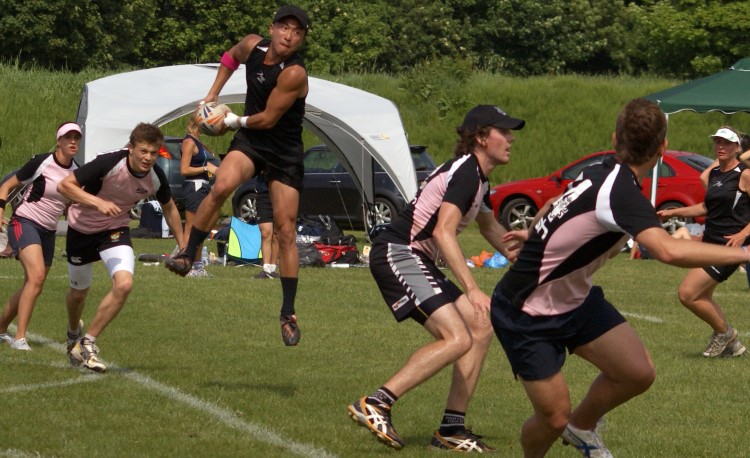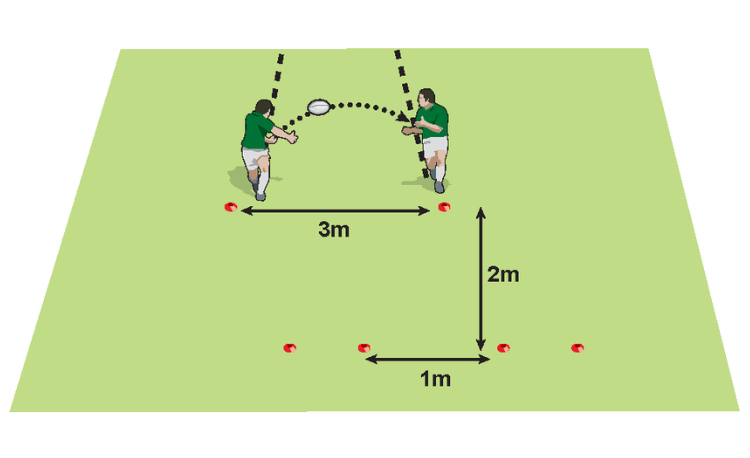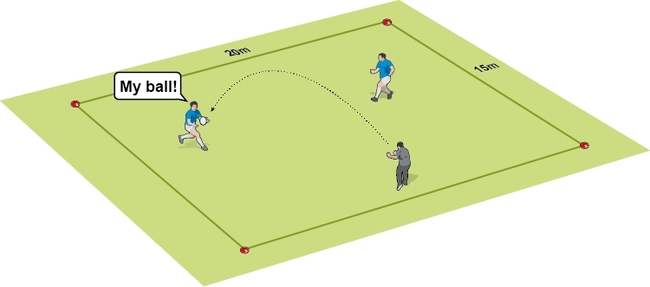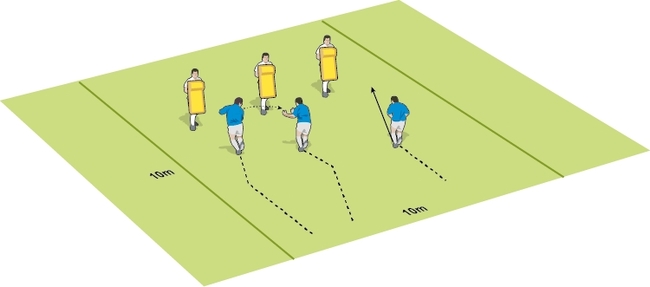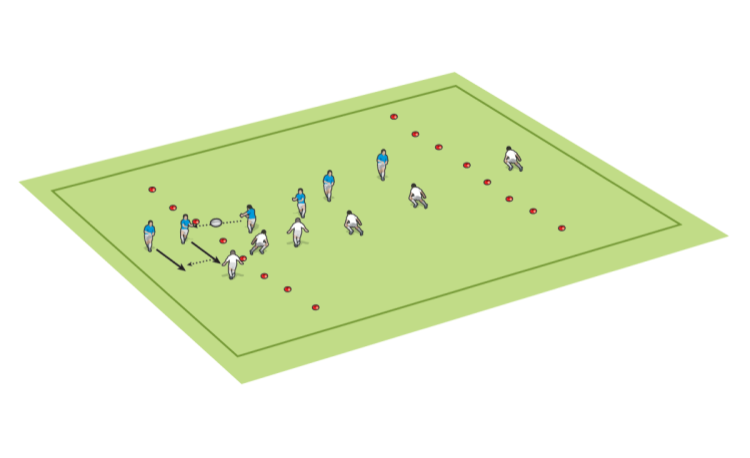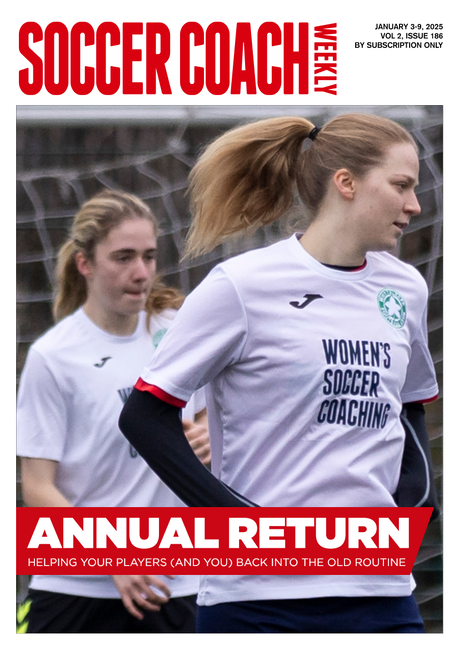Touch rugby to develop realigning and support
Touch Tag Sevensby Mark Calverley
Use this development game of touch rugby to improve support and realignment.
• Groups 1 and 2 start in attack and 3s are the defenders (in bibs).
• No kicks are allowed.
• When a touch tackle is made (see Fig 1), the touched player has to get in a low front-on position and WALK slowly forward.
• The tackler has to get in front of him and put two hands flat on his back, while walking backwards (see Fig 2).
• Two support attackers must drive the tackler away. The tackled player can then either feed to a support player, go to ground and place the ball, or pop (see Fig 3).
• Encourage the defence not to allow the attack through holes between them.
A try from a breakthrough is worth two points. A try from a break around the outside is worth one.
The defence is outnumbered, so it is important they try to make the attack make as many passes/cover as much ground as they can as this increases the chances of mistakes in attack.
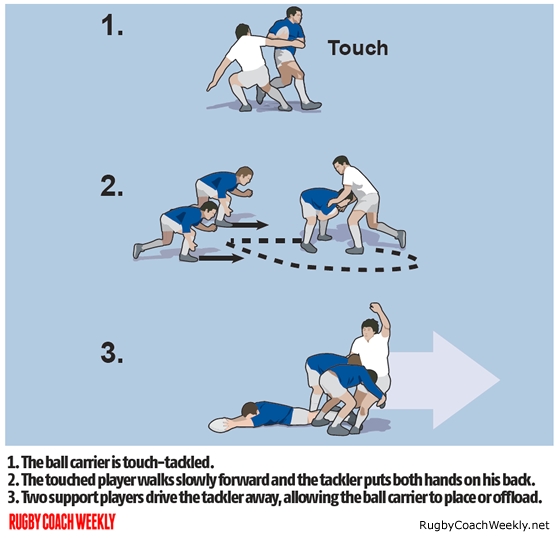
used for intercepts and dropped balls.
Finding space in the two different zones (outlet and game) is vital for successful attack or defence.
All players must be continually active and looking for space in attack, or to close down the attackers in defence.
• Passing to a player in the outlet zone means that the passer moves into the outlet zone. The receiver can pass out of the zone OR run and pass in the zone, OR run out of the zone and pass.
The numbers of players, the size of the pitch and the type, or number of balls used, can all be varied.
Your creativity, as a coach, in modifying and adapting rules, will help the game to stay fresh and challenging to players.
How to play
• Divide your squad into three equal groups.• Groups 1 and 2 start in attack and 3s are the defenders (in bibs).
• No kicks are allowed.
• When a touch tackle is made (see Fig 1), the touched player has to get in a low front-on position and WALK slowly forward.
• The tackler has to get in front of him and put two hands flat on his back, while walking backwards (see Fig 2).
• Two support attackers must drive the tackler away. The tackled player can then either feed to a support player, go to ground and place the ball, or pop (see Fig 3).
• Encourage the defence not to allow the attack through holes between them.
A try from a breakthrough is worth two points. A try from a break around the outside is worth one.
The defence is outnumbered, so it is important they try to make the attack make as many passes/cover as much ground as they can as this increases the chances of mistakes in attack.

The role of the supporters
Supporters need to look for space and communicate well. Long passes in the air are often easy to intercept and a five press-ups penalty should beused for intercepts and dropped balls.
Finding space in the two different zones (outlet and game) is vital for successful attack or defence.
All players must be continually active and looking for space in attack, or to close down the attackers in defence.
Key points:
• Tries can only score by passing to a player in the try zone, not from running into the zone.• Passing to a player in the outlet zone means that the passer moves into the outlet zone. The receiver can pass out of the zone OR run and pass in the zone, OR run out of the zone and pass.
The numbers of players, the size of the pitch and the type, or number of balls used, can all be varied.
Your creativity, as a coach, in modifying and adapting rules, will help the game to stay fresh and challenging to players.
Newsletter Sign Up
Coaches Testimonials

Gerald Kearney, Downtown Las Vegas Soccer Club

Paul Butler, Florida, USA

Rick Shields, Springboro, USA

Tony Green, Pierrefonds Titans, Quebec, Canada
Subscribe Today
Be a more effective, more successful rugby coach
In a recent survey 89% of subscribers said Rugby Coach Weekly makes them more confident, 91% said Rugby Coach Weekly makes them a more effective coach and 93% said Rugby Coach Weekly makes them more inspired.
Get Weekly Inspiration
All the latest techniques and approaches
Rugby Coach Weekly offers proven and easy to use rugby drills, coaching sessions, practice plans, small-sided games, warm-ups, training tips and advice.
We've been at the cutting edge of rugby coaching since we launched in 2005, creating resources for the grassroots youth coach, following best practice from around the world and insights from the professional game.

